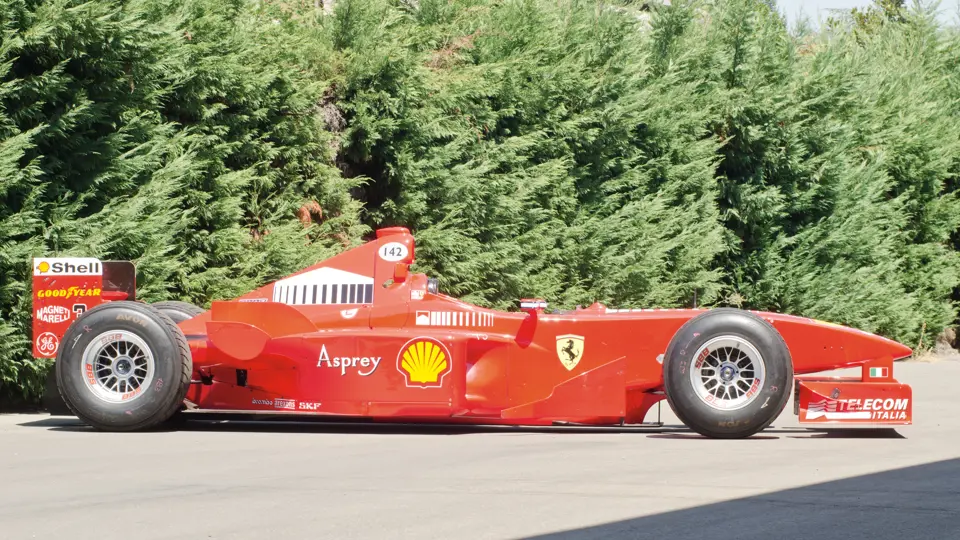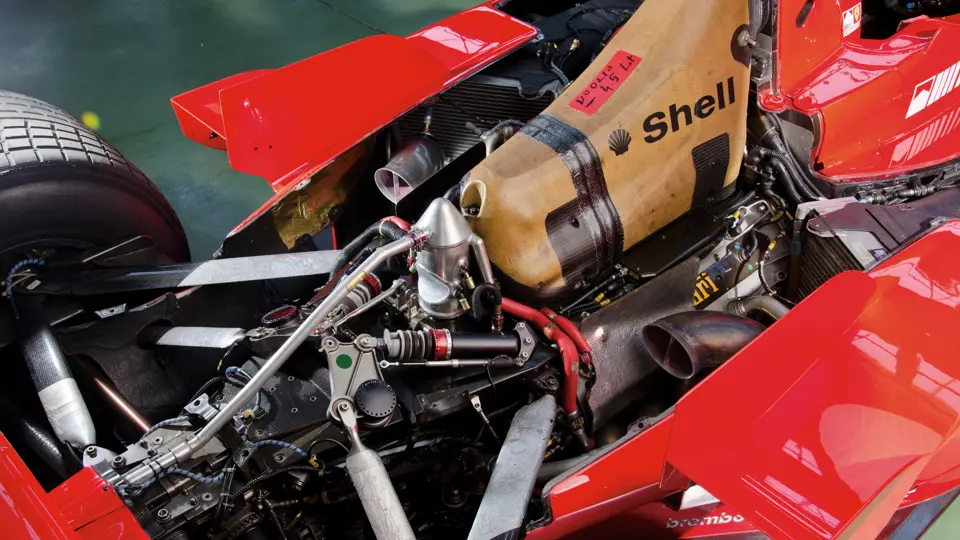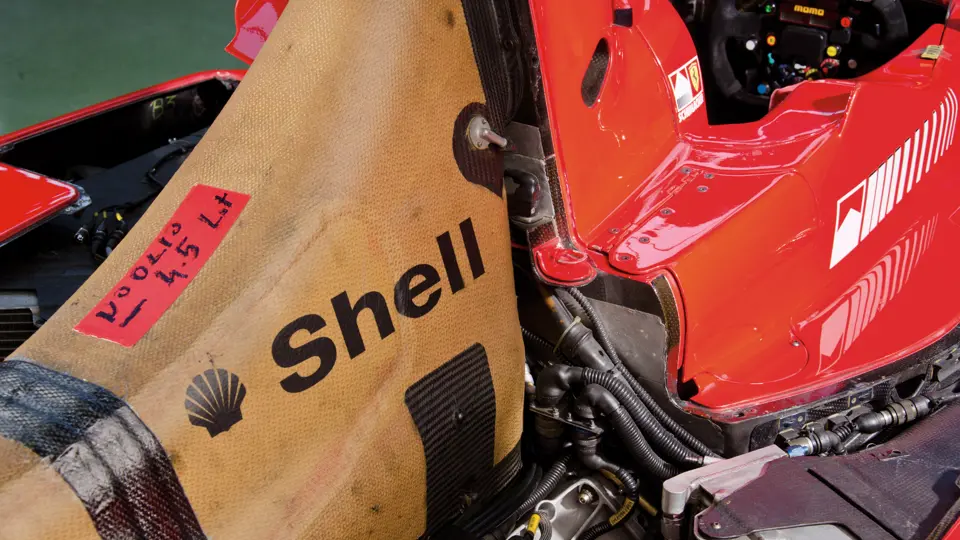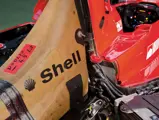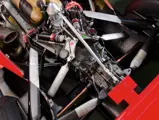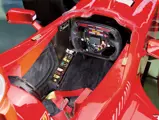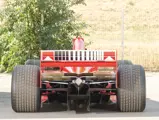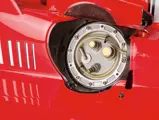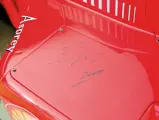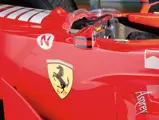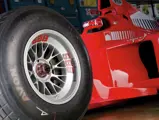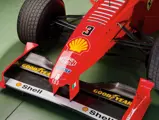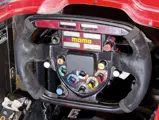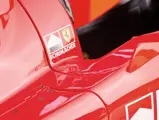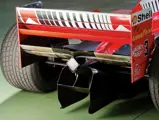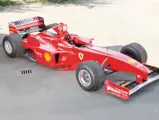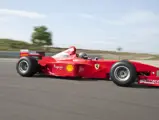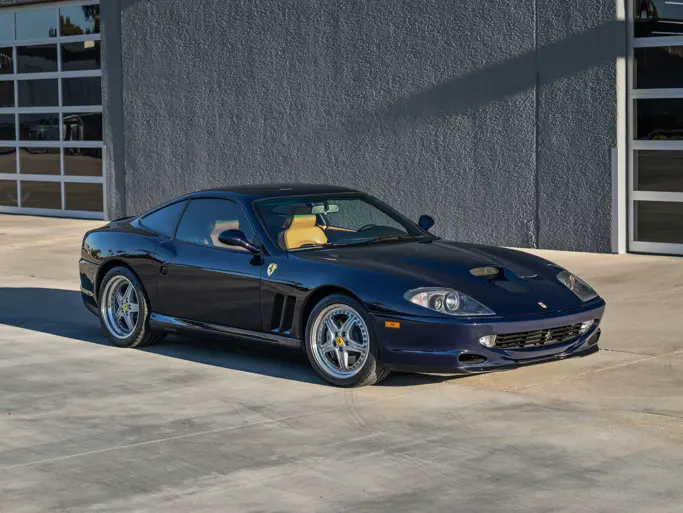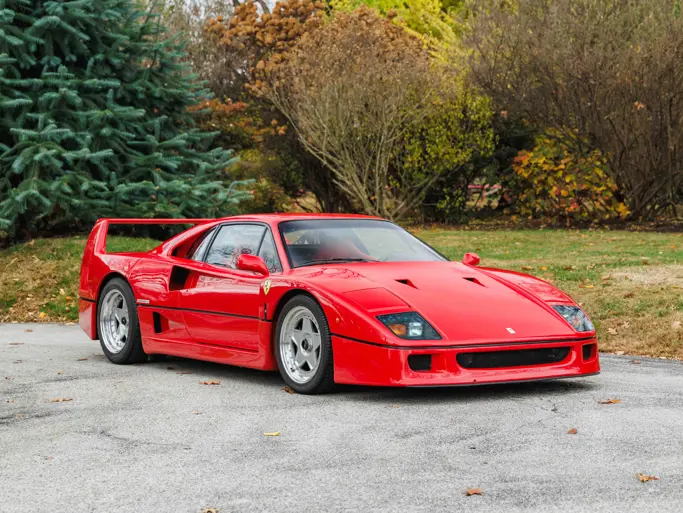805 bhp, 2,996 cc dual overhead camshaft V-10 engine, seven-speed sequential button-shift gearbox, independent front and rear pushrod-activated torsion arm suspension, and four-wheel ventilated carbon-ceramic composite disc brakes. Wheelbase: 116.25 in.
• Ex-Michael Schumacher and Eddie Irvine; the third of nine built
• Engine and transmission rebuilt in 2009; Ferrari Classiche certified
• Early Rory Byrne-designed F1 Ferrari
• The penultimate chapter to Ferrari’s millennial F1 dominance
The 1998 season saw Ferrari take the penultimate step towards its re-ascendancy in Formula One racing. In the years since its last Constructors Championship of 1979 and its last Drivers Championship of 1982, the Ferrari Scuderia had at first struggled, and then it increasingly dedicated itself to re-establishing its onetime dominance in the sport. Key to this pursuit, of course, was hiring back-to-back championship driver Michael Schumacher away from Benetton in 1996. Schumacher would go on to take the Scuderia to unprecedented heights in the 2000s with a run of six consecutive winning seasons.
In Schumacher’s initial years with Ferrari, the car itself still required some development to contend with rivals such as Williams and McLaren. Seeking to address the car’s deficiencies, in 1997, Ferrari lured designer Rory Byrne out of retirement to replace the departed John Barnard. Though Byrne initially worked to develop Barnard’s 1996 F310 into the F310B for the 1997 season, rule changes following the season’s conclusion, mandating an all-new car for 1998.
On 7 January 1998, Ferrari invited over 800 journalists to Maranello to preview the new car, which was surprisingly dubbed the F300. Michael Schumacher, co-driver Eddie Irvine, Ferrari President Luca di Montezemolo, and Scuderia Manager Jean Todt were all on hand to present the F300, which employed a new engine in the Tipo 047 V-10. Byrne’s design featured several alterations to the aerodynamics of the F310B, including more sculpted air intake panels that commenced several inches closer to the front of the car. These and other aerodynamic innovations are often credited as the basis of the championship cars that soon followed.
Though McLaren won the first two races of 1998, Ferrari bounced back with new Goodyear tyres and some tweaks to the car to take the season’s third race at Argentina. Thus, a close competition ensued for the remainder of the season, with Ferrari narrowly finishing 2nd to McLaren in both the Drivers and Constructors Championships. Despite the seeming setback, the lessons learned propelled the Scuderia to the Constructors Championship the following season in 1999, beginning the historic run of consecutive winning seasons, with Mr Schumacher only losing the Drivers’ title because of a broken leg that forced him to miss several races. His return in 2000 marked the beginning of five consecutive Drivers Championships and the continuation of Ferrari’s still-unequalled run of consecutive Constructors Championships.
Chassis number 183 is believed to have completed assembly on 11th February 1998 and is the third of just nine total F300 examples built. The car claims the worthy distinction of being one of the principal test cars employed by Michael Schumacher and Eddie Irvine during the model’s early proving sessions at Fiorano and Mugello in February 1998. According to original press releases from the FIA, 183 made its first appearance on 13th February 1998, tested by driver Eddie Irvine at Fiorano.
Following the loss of the season’s initial two races to McLaren, 183 underwent testing with the new Goodyear tyres at Barcelona on the 3rd of April, driven by Schumacher. The results of this testing translated to a win on the 12th of April at the Grand Prix of Argentina, Ferrari’s first victory of the season. During the week of the 17th of April, this car was extensively tested by Mr Irvine at Fiorano, in preparation for the San Marino Grand Prix at Imola, at which Mr Schumacher finished 3rd. It is believed that the car was also used for testing later in the season at the Hungarian Grand Prix in August and at the Japanese Grand Prix in November.
Sold from the Ferrari factory by the mid-2000s, 183 was acquired by Pietro and Marco Tognoli, who took the car to Ferrari F1 Clienti events in 2006 and 2007. Approximately one year later, the car was purchased by its current owner and subsequently treated to a full engine rebuild in early-2009. On the strength of this work, the consignor was invited to the Goodwood Festival of Speed in July 2009, where the brutally fast race car performed faultlessly. Later that month, the seven-speed sequential gearbox was significantly overhauled, a process that included changing all the fluids, magnafluxing the parts, and changing the ratio of two of the gears. In 2011, 183 participated in several Ferrari F1 Clienti events, including the meets at Mugello on the 7th of April, Imola on the 15th of June, and the Ferrari Finals on the 6th of November. The car once again performed faultlessly during a recent run at the Modena test track, and a video of the test is available at rmauctions.com.
Thanks to the 2009 restoration of the powertrain, 183 promises the future ownership continued mechanical reliability and prodigious power at track days and Ferrari-sanctioned events. Only 666 kilometres have accrued since the engine was rebuilt and only 502 kilometres since the transmission was freshened. This F300 is accompanied by its Classiche certificate. As Ferrari F1 Clienti services has recommended a new round of freshening at 1,400 kilometres, this car’s next caretaker can expect more than 700 kilometres of racing thrills and Formula One power before further mechanical work should be required.
Eminently rare and forever tied to one of racing’s all-time greatest legends, the extraordinary Michael Schumacher, 183 is a verifiable Scuderia collectable, significant in provenance and design. It offers long-term appreciation as the immediate antecedent of one of Formula One racing’s greatest championship runs, and it can also be enjoyed first-hand as a breath-taking demonstration of the amazing technical specifications and unbridled power of a genuine late-1990s Ferrari F1 car.


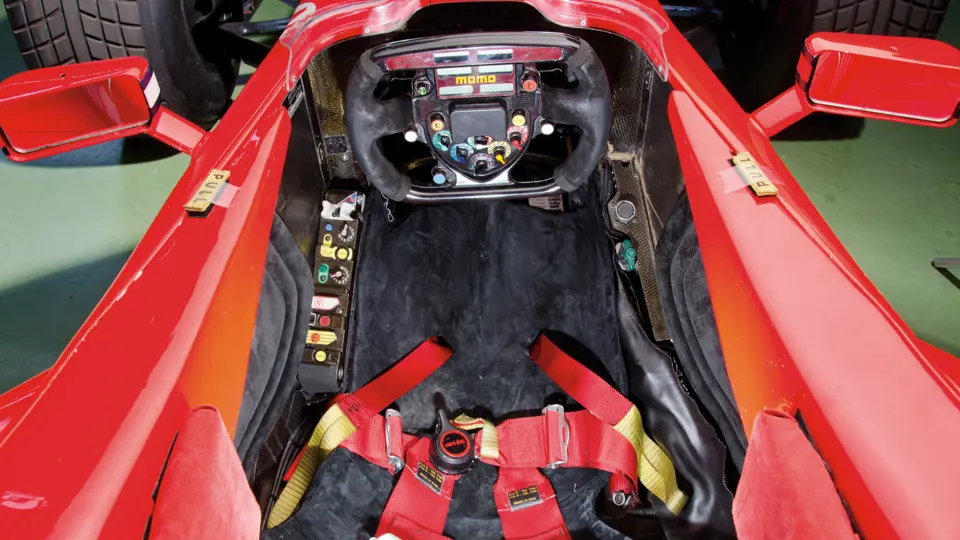

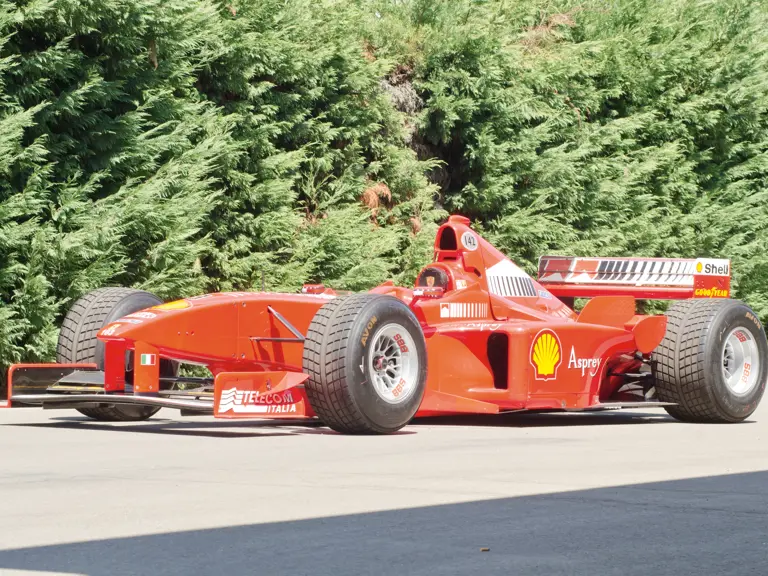
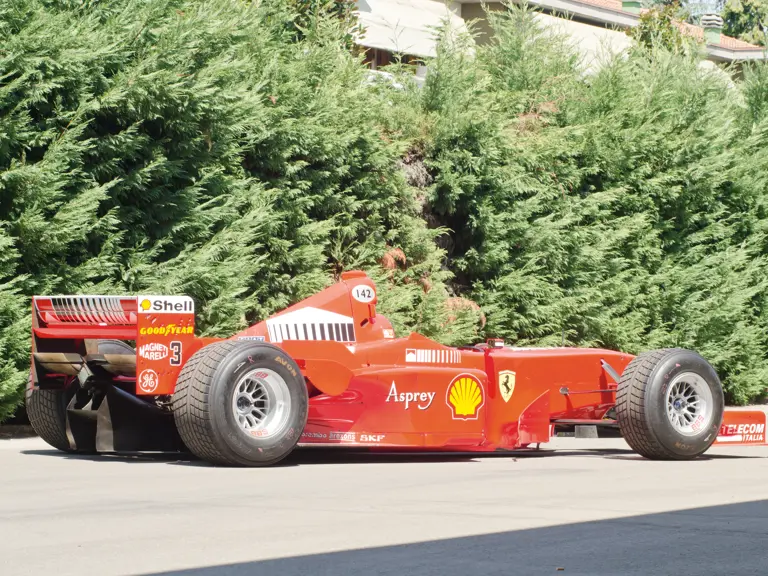
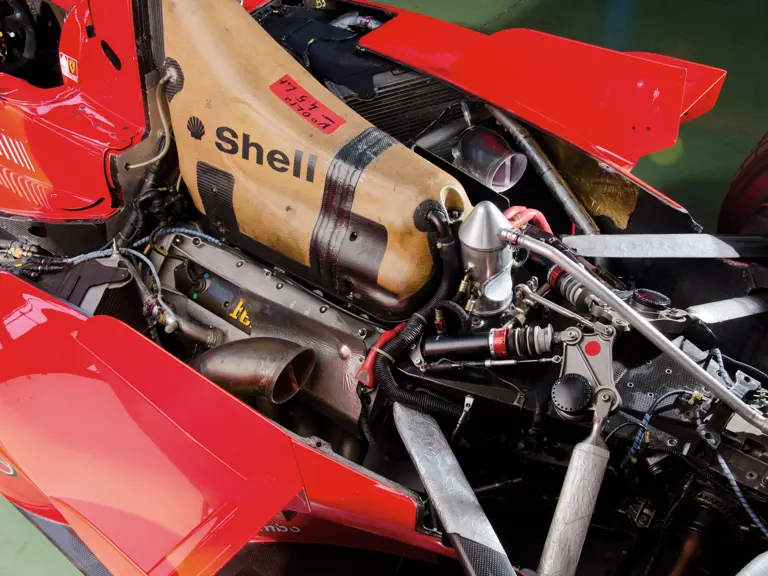
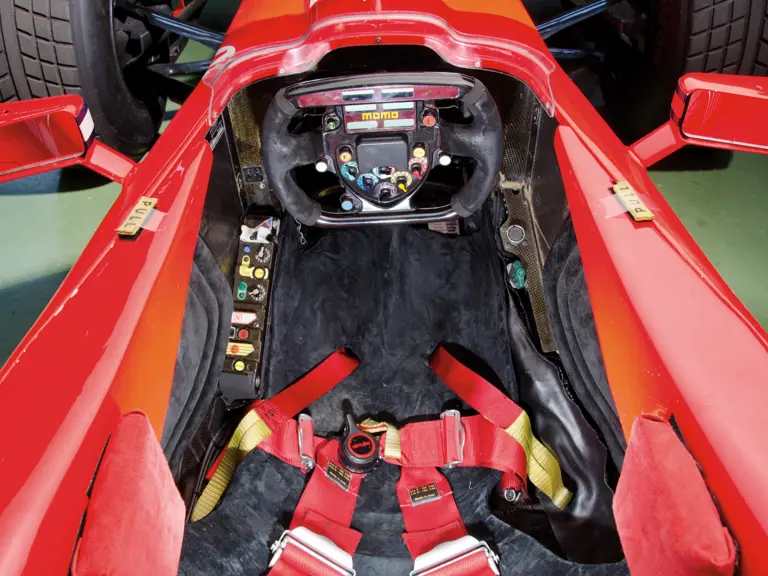
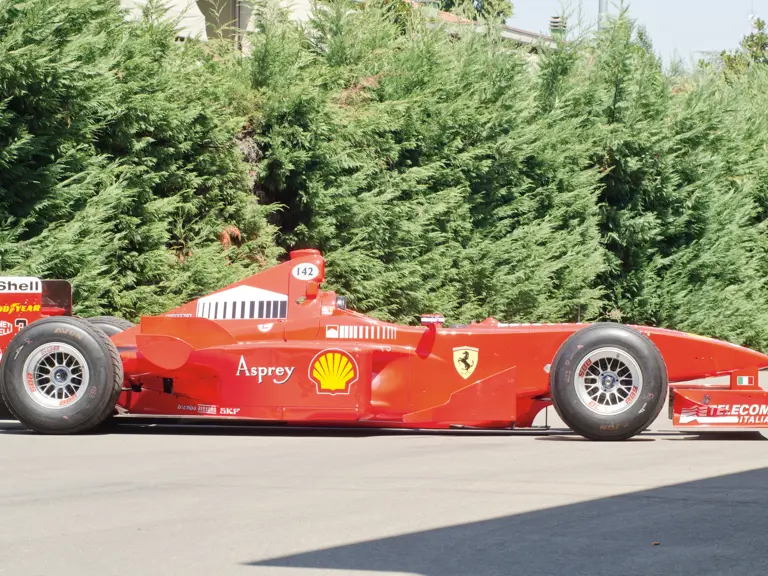
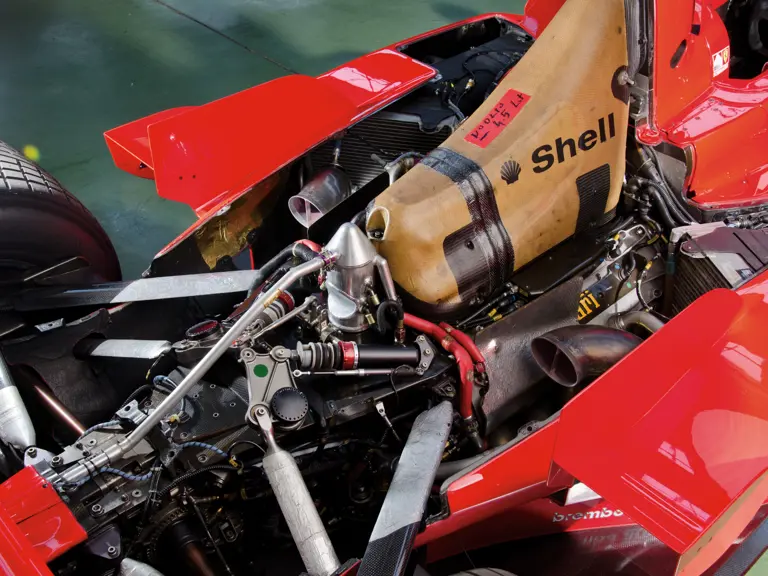

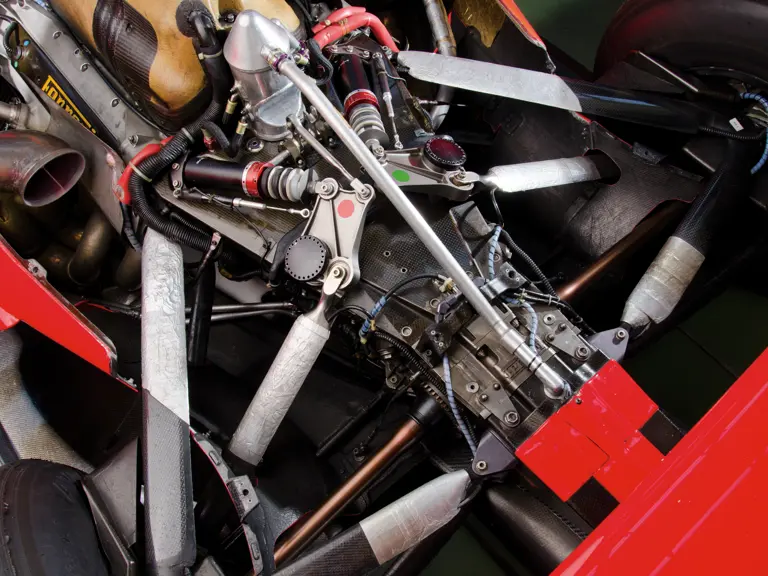
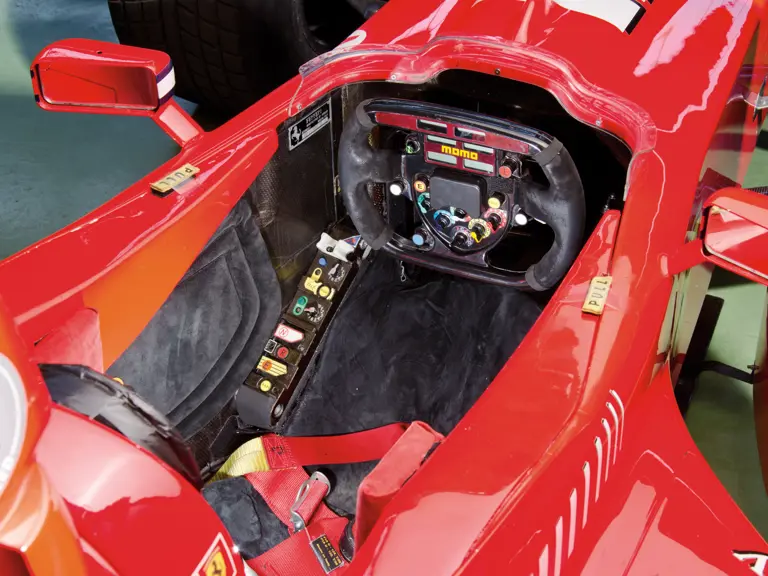
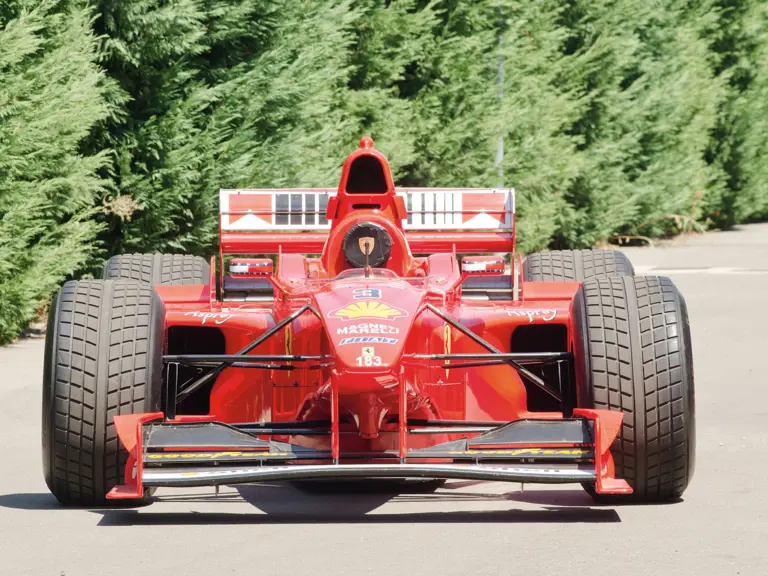

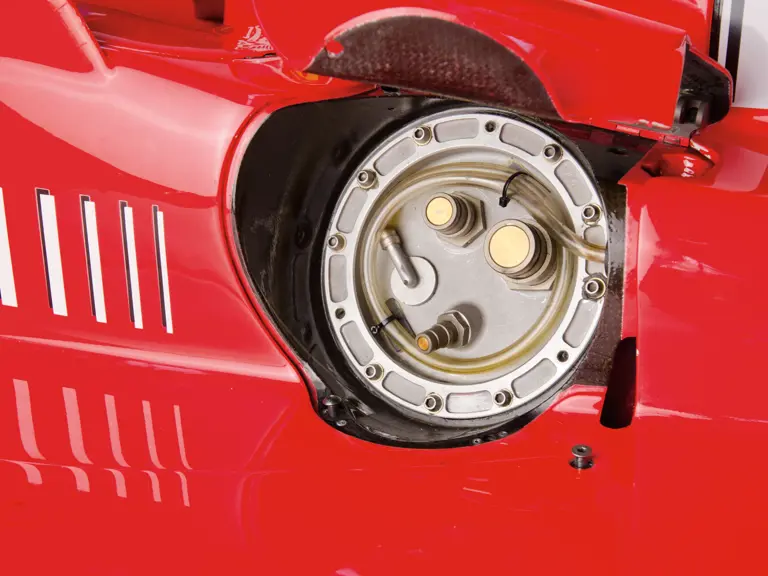

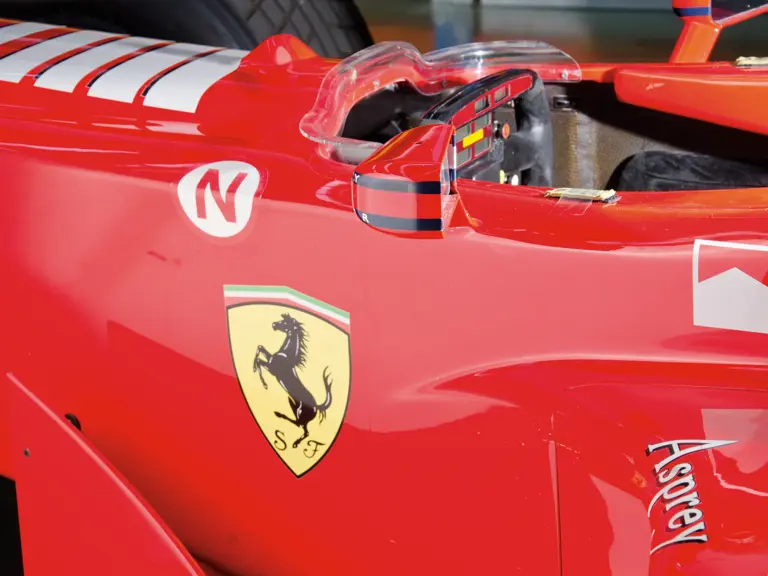
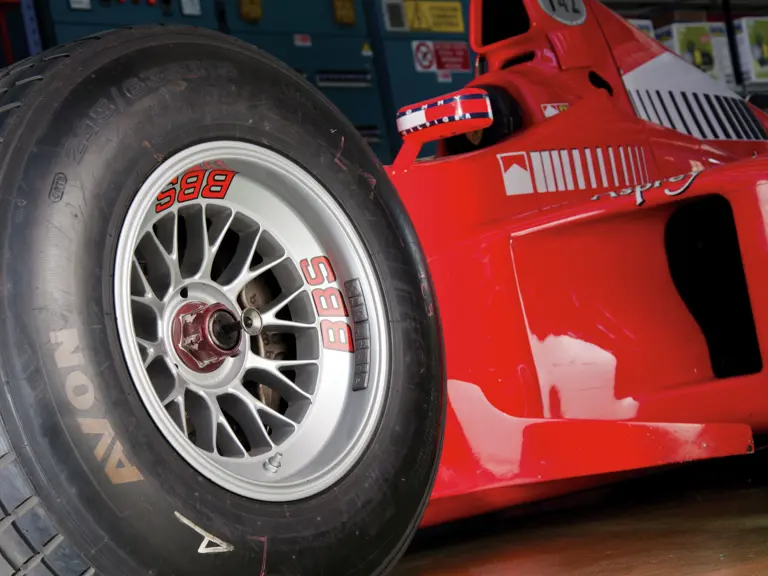
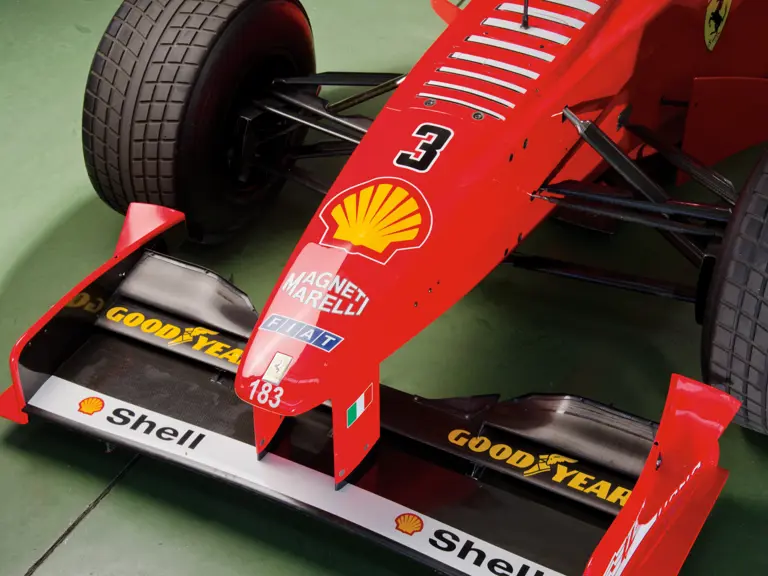
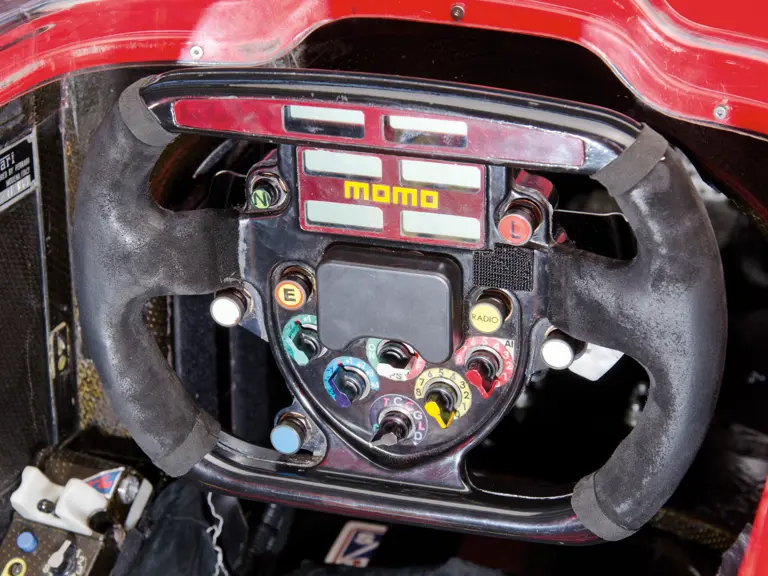
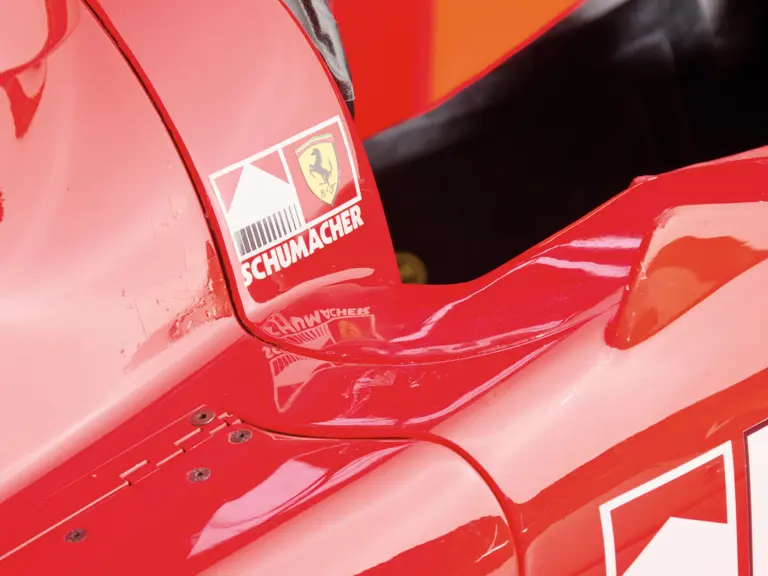

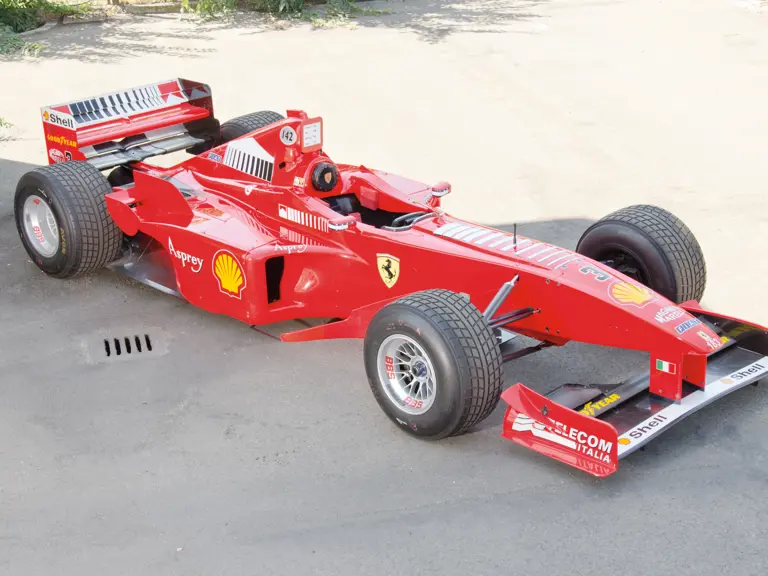
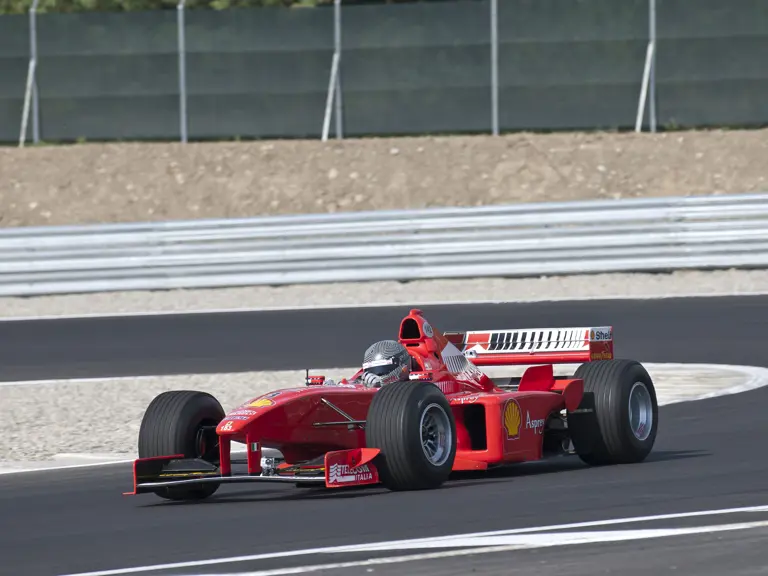
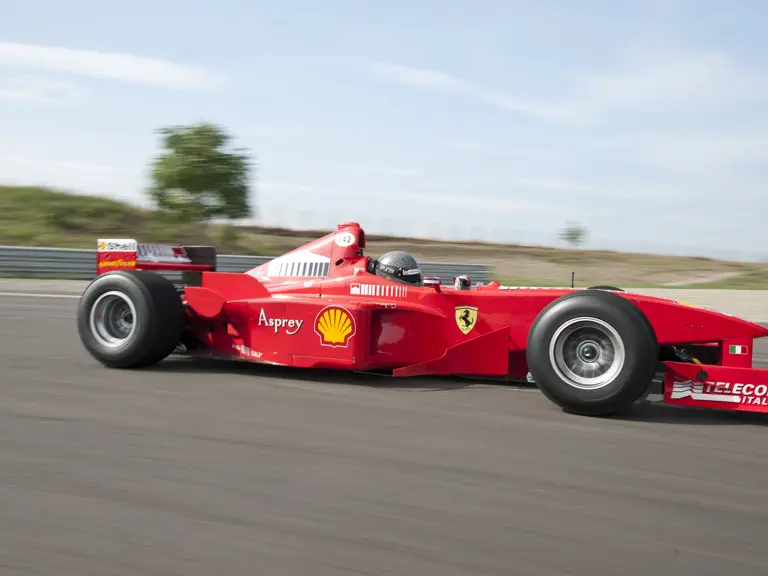
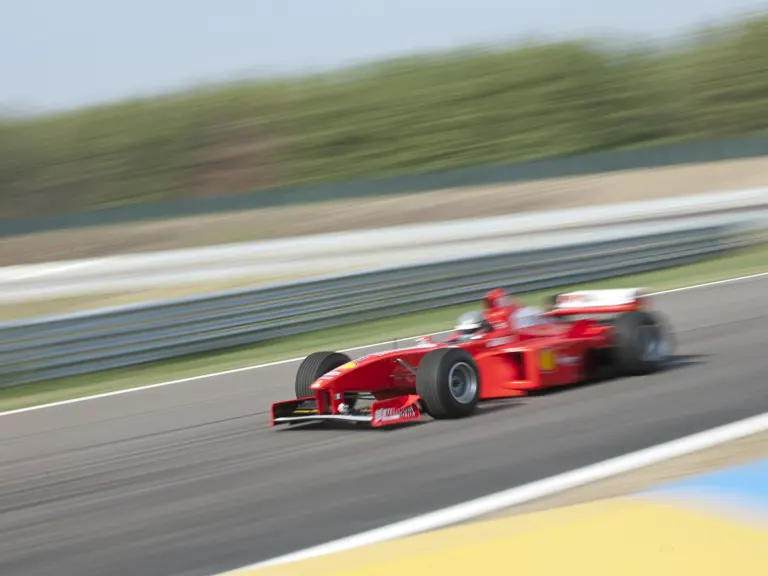

 | London, United Kingdom
| London, United Kingdom
